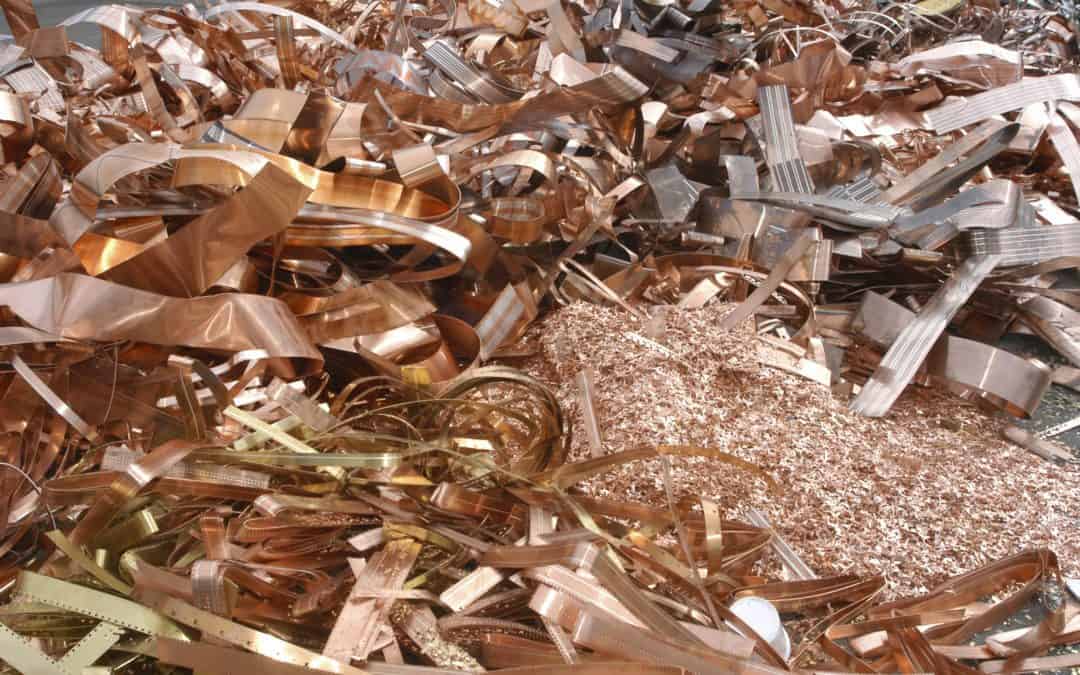Brass provides favorable economics that few other materials can match. Made from a blend of copper, zinc and other elements, brass offers superior machinability, recyclability and overall environmental advantages. In fact, producers of brass raw materials like rod, bar and ingots are industry leaders in their commitment to sustainable, environmentally conscious uses of natural resources. And unlike many materials, brass can be recycled an infinite number of times with no loss in base properties or performance. The high recyclability and value of brass scrap contributes to a relatively closed-loop system that keeps costs down, conserves energy and reduces carbon emissions.
The entire brass industry relies on recycled scrap to provide most of the input material for “new” brass. Small additions of pure elements are added to molten brass scrap to balance chemistry and produce the desired alloy composition. In fact, many machining operations return bar ends, brass chips and solids directly to a mill as part of their purchase terms to yield new rod stock.
In addition to copper and zinc, brass may contain other alloying elements that are added to improve machinability, corrosion resistance and other material properties. The availability of different types of brasses gives manufacturers options to meet a wide range of technical requirements for diverse applications. From a recycling standpoint, it is important to keep scrap from certain types of brass alloys with incompatible compositions separate from each other. Depending on the alloy being produced, certain elements can act as deleterious impurities. For example, scrap from a lead-free silicon-containing brass should not be mixed with scrap from a lead-containing brass.
The co-mingling of scrap from different alloy grades can introduce contaminants during re-melting, which can cause processing failures, degrade material properties and require costly dilution to bring impurities back down to manageable levels. Reliable scrap segregation enables brass mills to maximize their use of recycled content, keep costs down and consistently produce products that demonstrate specific properties for successful use in manufacturing.
The stream of scrap material therefore requires close supervision, documentation and good communication between scrap buyers and sellers. Because most “new” scrap generated during industrial processing comes directly from manufacturers who work with brass stock, its sources are typically easy to trace, which makes it simpler to classify, separate, process and recycle. By contrast, post-consumer scrap reclaimed from end of life (EOL) products poses much more complex segregation challenges because it comes from disparate sources that may have little knowledge of origin and/or elemental content.
Because of unknown sources and/or elemental content, testing and verification of incoming scrap are critical steps in the brass production process. Fortunately, technological advancements, including handheld chemistry analyzers and automated sensor-based sortation equipment, offer mills and recyclers new tools to detect and remove scrap contaminants before they become a problem.
To manage the purity of incoming scrap, brass producers adhere to a set of specified tolerance limits for elements that can act as contaminants such as aluminum, arsenic, bismuth, iron, manganese, nickel, phosphorous, silicon and tin. These contaminants and their limits vary depending on the alloy being made and typically apply as maximum percentages by weight. Clear scrap specifications make it easier for machine shops and scrap dealers to determine what they can recycle as well as who will accept it.
In addition to scrutinizing the elemental chemistry of brass scrap, recyclers also examine the cleanliness of the materials returned to them. Contamination with foreign substances such as plastic, paint, oil, cutting fluids, sand, glass or wood can reduce the price paid for scrap. Proper care to remove non-metallic contaminants helps maximize the value and use of scrap and contributes to higher recycling rates.
Maintaining the purity of heterogeneous scrap streams is a challenge for all recyclable materials, but there are additional factors that give brass a recycling advantage. Compared to other metals such as aluminum and steel, the recycling of brass chips is often more economical and efficient. For example, aluminum chips have a significantly higher volume to weight ratio than brass. As such, briquetting may be required to reduce storage space and transportation costs.
The briquetting processing steps, however, involve additional equipment, labor, maintenance and energy costs. The high surface area and oxidation of aluminum chips can also lead to significant losses through burn-off and dross formation, and material loss during re-melting can reach rates as high as 25%. From an economic perspective, brass chips can typically be reclaimed for 75% to 90% of the original material value, whereas steel chips might only command 15% to 25% or less. Brass therefore provides a higher economic recycling incentive versus steel and gives manufacturers superior control over their net material costs.
When brass enters part production operations, its high-speed machining capabilities enable higher material removal rates that result in shorter cycle times, especially on modern machine tools. Even under aggressive cutting conditions, brass requires less machining power and affords longer tool life, which reduces downtime and provides further cost savings. Between the superb machinability and high chip recycling value, brass helps manufacturers reduce production costs and increase profitability.
Additionally, brass allows manufacturers to exploit the full benefits of modern high-speed machine tools, on which the material can run more than three times faster than steel with up to eight times longer tool life in single point turning operations, for example. For shops interested in exploring the full value of brass, both in production and in recycling, the Copper Development Association offers precompetitive industry data and technical support at all stages of the material loop.
As appeared on Mfgnewsweb.com on March 1, 2020


Recent Comments